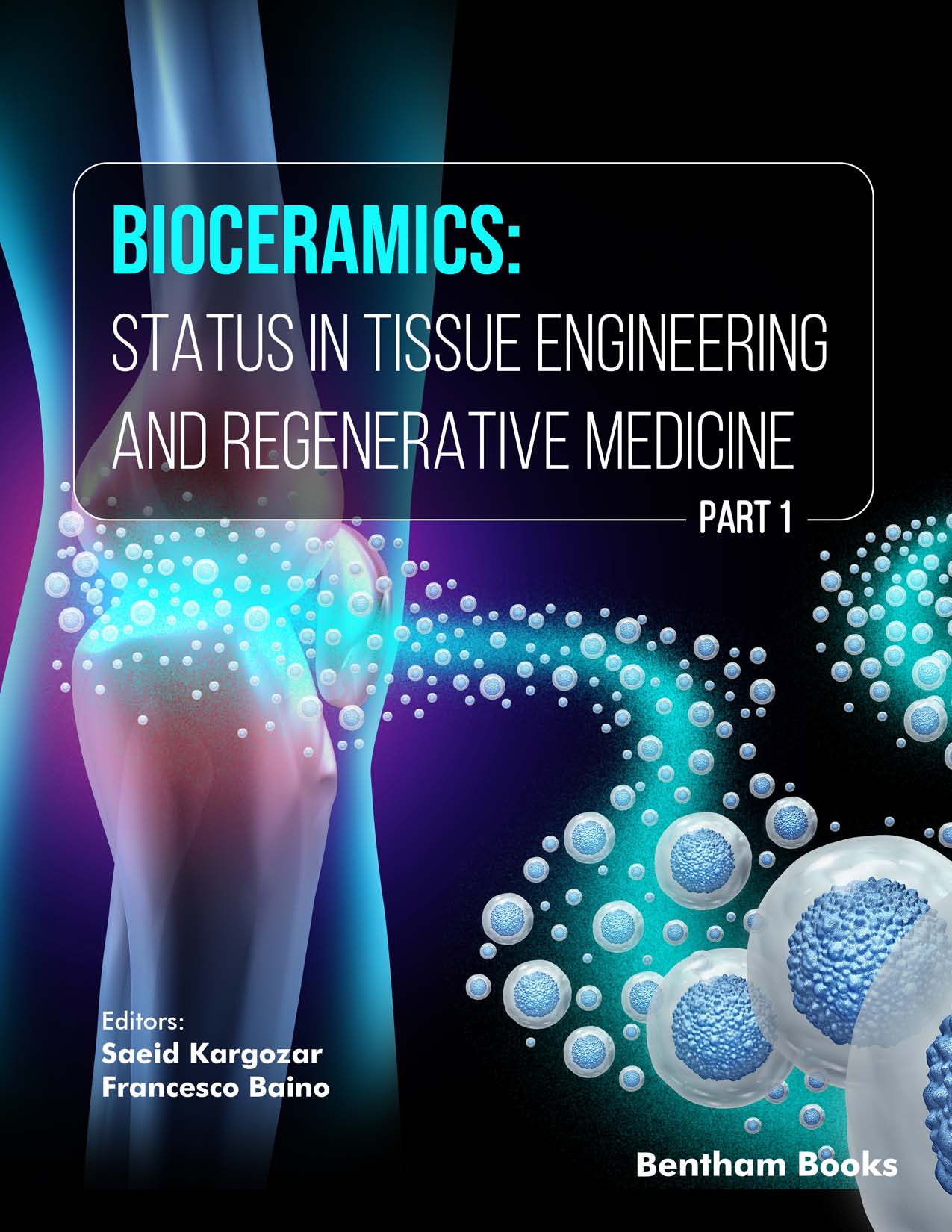Foreword
The use of bioceramics for tissue engineering and regenerative medicine extends over two centuries. Dorozhkin provided a detailed review of the history of bioceramics [1]. He noted that Johan Gottlieb Gahn and Carl Wilhelm Scheele first described the presence of calcium and phosphorus in bone in the second half of the eighteenth century [1, 2]. The first use of bioceramics in medicine occurred in the late nineteenth century when Junius E. Cravens distributed a calcium orthophosphate powder called “Lacto-Phosphate of Lime” for capping the dental pulp during dental restorations [1, 3, 4]. Larry Hench's discovery in 1969 that a sodium-calcium-phosphorous-–silicate glass possesses bone bonding functionality gave rise to the clinical use of “bioactive glass” materials for bone repair [5, 6]. The term “bioceramics” was first used shortly thereafter in 1971 [7]. The bioceramics field is now truly global in nature and includes research, pre-clinical, and clinical activities involving various types of bioactive and bioinert inorganic materials.
This volume by Saeid Kargozar, a research fellow in the Department of Radiation Oncology, Simmons Comprehensive Cancer Center, UT Southwestern Medical Center, and Francesco Baino, an associate professor in the Department of Applied Science and Technology at the Politecnico di Torino, provides a comprehensive overview of the use of bioceramics for tissue engineering and regenerative medicine. The first part of the book (Part 1) focuses on the fundamentals of biocompatible ceramics, bioactive glasses and composites, and collects 10 chapters. In Chapter 1, Kargozar and Baino provide a description of the status of bioceramics in tissue engineering and regenerative medicine. Chapter 2, by Moghanian et al., provides an introduction to biocompatible glasses, ceramics, and glass ceramics. Batool et al. consider recent advances in bioactive glasses and glass ceramics in Chapter 3. Chapter 4, by Bahati et al., describes the structure, properties, and processing of bioactive glasses. Kargozar et al. focus on the biocompatibility of bioactive glasses in Chapter 5. In Chapter 6, Moghanian and Nasiripour describe the use of bioinert ceramics for biomedical applications. Moghanian et al. review the processing and properties of bioresorbable ceramics in Chapter 7. Dorozhkin reviews the use of calcium orthophosphates in tissue engineering in Chapter 8. In Chapter 9, Hosseini et al. consider the use of carbon nanostructures for tissue engineering and cancer therapy. Benedini and Messina describe advances in polymer/ceramic composites for bone tissue engineering in Chapter 10. The second part of the book (Part 2) will be addressed to the applications of the bioceramic materials discussed in the present volume.
In this volume, Professors Kargozar and Baino as well as the chapter contributors have provided the bioceramics community with a comprehensive consideration of the bioceramics field. I anticipate that their volume will be beneficial to students as well as researchers in academia, government, and industry as they continue efforts to improve our understanding of the use of bioceramic materials for tissue engineering and regenerative medicine applications.
Prof. Roger Narayan
Joint Department of Biomedical Engineering
North Carolina and North Carolina State University
Raleigh, USA
REFERENCES
1
Dorozhkin
S.V.
A detailed history of calcium orthophosphates from 1770s till 1950.
Mater. Sci. Eng. C
2013
33
6
3085
3110
10.1016/j.msec.2013.04.002
23706189
2
Dorozhkin
S.V.
A history of calcium orthophosphates (CaPO 4 ) and their biomedical applications.
Morphologie
2017
101
334
143
153
10.1016/j.morpho.2017.05.001
28595833
3
Dorozhkin
SV
Calcium orthophosphates as a dental regenerative material.
2019
10.1016/B978-0-08-102476-8.00016-5
4
Cravens
J.E.
Lacto-phosphate of lime; Pathology and treatment of exposed dental pulps and sensitive dentine.
Dent. Cosmos
1876
18
463
469
5
Hench
L.L.
The story of Bioglass®.
J. Mater. Sci. Mater. Med.
2006
17
11
967
978
10.1007/s10856-006-0432-z
17122907
6
Hench
L.L.
Splinter
R.J.
Allen
W.C.
Greenlee
T.K.
Bonding mechanisms at the interface of ceramic prosthetic materials.
J. Biomed. Mater. Res.
1971
5
6
117
141
10.1002/jbm.820050611
7
Blakeslee
K.C.
Condrate
R.A.
Sr
Vibrational spectra of hydrothermally prepared hydroxyapatites.
J. Am. Ceram. Soc.
1971
54
11
559
563
10.1111/j.1151-2916.1971.tb12207.x

